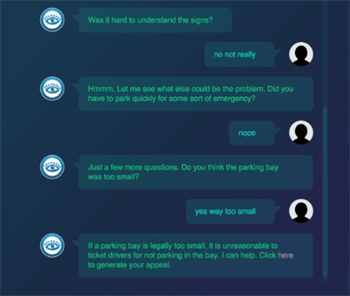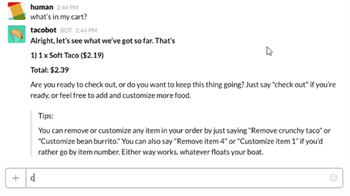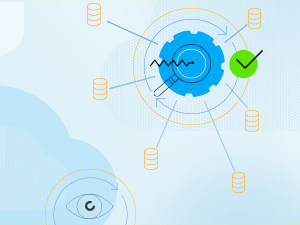Chatbots and AI are rapidly developing and powering a new wave of customer engagement. It's not too late to pull ahead of the crowd, and Progress can help.
Do you ever ask Google Now to send a text message to your wife while you're driving? Or do you ever go to a new city and ask Siri to help you find the perfect coffee shop? These are just everyday examples of how bots are improving user experience. This blog post will introduce companies, big or small, to bot technology—and offer suggestions on how they might be able to utilize it to engage their users in the best possible way, rewarding them with an unprecedented experience.
Progress is currently exploring bot technology and the various ways that it could potentially deliver business benefit for our customers and partners. While we don't directly offer bots as part of our software—yet—the technology exists to build bots with the help of OpenEdge.
The best way to prove an idea or a concept is to do it yourself. We created several chat bots for businesses and kept it simple, so that everyone could build their bots even with limited knowledge and experience.
What Are Chatbots?
Chatbots are software programs capable of establishing conversation with human users, preferably in their natural language (but not necessarily limited to text conversation). They can also facilitate voice, virtual reality and other means of communication. A few interesting examples of chat bots are:
The Bot Lawyer

This bot helps users file legal claims for parking tickets and other simple petitions. To achieve this, it asks multiple questions and comes up with an appeal letter. Once the appeal letter is generated, it can be directly mailed to the court.
The bot is useful in this context because laws are publicly available and the trivial tasks which were once accomplished by lawyers decades ago can now be automated.
It can also help users with filing insurance claims in case of delayed or cancelled flights.
You can access the bot here and learn more from reading this article.
The Tacobot

This is a Slack bot, which takes orders over a chat and helps users with related queries like order customization and cart total.
The bot is still in private beta mode but will be available soon.
What Is Slack?
Slack is one of the many available messaging channels where individuals and teams can communicate.
Why Should You Care?
The above examples make it obvious that businesses are transforming, and they are looking to use chatbots as the primary way to engage with their users. But there is good news! It’s not too late—the train has yet to leave the station. Most of these bots are in private beta mode and everyone is making earnest efforts to put them into public use. It is still in the early stages, so you can be ahead if you choose to put your focus on bots. Here are a few statistics to support the claim for the future of bots:
- Slack announced an $80 million investment in bot startups
- Telegram opened a bot store
- Facebook launched a bot platform for Facebook messenger
- RBS, Llyods Banking Group, Renault and Citroen used virtual assistants as a first point of contact
- Microsoft invested heavily in creating a bot framework for facilitating easy development of bots
Whether for ordering food, booking flight tickets, filing legal claims or launching a personalized survey, every business could use a bot to improve user experience.
Imagine that you want your customers to answer a survey, but they don’t want to take it right away. If it is on a piece of paper or an online form, that can cause a problem. With the bots, you can fix this by sending them text messages one by one spread over a span of multiple days, allowing them to answer when they have the time. The conversation context is persistent, and that is what makes the bots so amazing.
How Do I Get a Bot for My Business?
Building a bot for yourself is not tough, but deciding what you want the bot to do can sometimes be confusing.
Here are the top seven questions you should ask yourself before writing a bot for your business:
- What primary purpose is your bot going to address?
- Who are the primary users of your bot?
- What are the channels you want to support?
- What are the actions your bot will perform?
- Is there a need for manual intervention at certain point?
- How deep and nested can your conversation go?
- How would you like to handle unexpected conversations?
These questions are important to define a clear specification for your bot. The bot business is fairly simple, but can get messy if the conversations go uncontrolled or unnecessarily deep.
At the same time, it is important to define the channels you want to communicate on. In the beginning, supporting all available channels might appeal to you. However, there are reasons to avoid multiple channels:
- Only a few channels, like FB messenger and Skype, offer you advanced controls (cards, calendars, etc.)
- It’s easy to maintain and debug fewer channels
Once you have a clear understanding of the requirements of the bot, you can begin to write one. Writing a bot is not just coding—there are few more phases to it. In fact, I would say coding is just 25% of what you do. It also involves training the bot, defining response templates, maintaining the conversational infrastructure, and integrating it with messaging channels and backend system of records.
Thankfully, the bot framework provided by Microsoft already offers most of these features out of the box, and requires you to only write the brain of the bot. Next week we’ll take a closer look at best practices in developing bots using the Microsoft Bot Framework, and considerations for utilizing it within your OpenEdge applications.

Dharmendra Prasad
Dharmendra is a Principal Software Engineer at Progress working with the Advance Technology Group, Progress Labs. Actively involved in multiple research projects including Chatbots for OpenEdge Applications and simplifying bot creation for different verticals. Also involved in sketching an IoT landscape and defining a generic IoT technology stack which suits different business use cases for Progress customers.
Next:
Comments
Topics
Sitefinity Training and Certification Now Available.
Let our experts teach you how to use Sitefinity's best-in-class features to deliver compelling digital experiences.
Learn MoreMore From Progress
Latest Stories
in Your Inbox
Subscribe to get all the news, info and tutorials you need to build better business apps and sites



